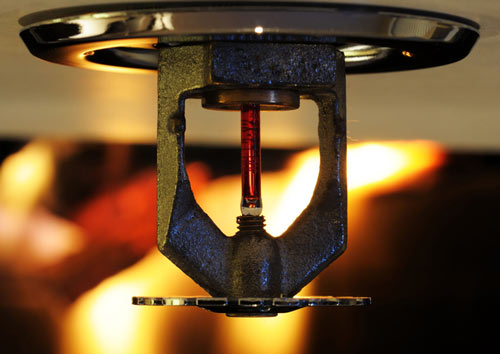Sprinkler Testing
Submitting sprinklers for testing
Select a representative sprinkler pattern based on the requirements outlined in the latest edition of NFPA 25. When sending sprinklers to IFR Africa for testing, be sure to use the IFR Africa provided label and identify each sprinkler with the following information:
- The name and address of the occupant of the building.
- Type of indoor environment (office, factory, warehouse, etc.).
- Location of sprinklers within the building.
- Your name and address.

What is the purpose of testing?
NFPA 25 requires building owners to have a sample of installed sprinklers tested by an accredited laboratory. IFR Africa offers pre-ordered sample kits and takes 10 business days for test results. This provides an easy and convenient way to ensure your sprinklers are compliant.
IFR Africa offering
- Standard size sprinkler sample kit
- Standard sprinkler kit includes shipping within South Africa.
- Kit includes 10 sprinkler tags, foam packaging to hold 10 standard size sprinklers, and a return label.
- Comprehensive report including images
- Laminated IFR Africa sprinkler test label
- Images of tested sprinklers
- Online access to results and forms
What to test, and when?
NFPA 25 Standard for Inspection, Testing, and Maintenance of Aqueous Systems (2023 edition)
5.3.1.2 A representative sample of sprinklers for testing in accordance with 5.3.1.1 shall consist of a minimum of four sprinklers or 1% of the number of sprinklers per sample area, whichever is greater.
5.3.1.2.1 The sample should represent the type and manufacturer of each sprinkler in the sample area.
5.3.1.2.2 Sprinklers tested do not include sprinklers replaced in the previous test interval.
However, NFPA 25 leaves it to the building owner to determine the sampling environment. For example, consider a 20-story building with 200 sprinklers of the same type on each floor. A building owner can define a sample environment as the environment for each floor of her 20-story building or for the entire building.

In the first example, from each floor one should get 4 sprinklers, or a total of 80 sprinklers.
In the second example, one should use only 1% of the entire building or 40 sprinklers total. Note, however, what NFPA 25 says about sprinklers that do not meet performance requirements.
“Where one sprinkler within a representative sample fails to meet the test requirements, all sprinklers within the area represented by that sample shall be replaced.”
In the first example, if the sprinklers failed on the ground floor, only the sprinklers on that floor should be replaced because each floor is represented by a different sample. In example 2, if the first-floor sprinkler fails, the entire building’s sprinklers will need to be replaced.
A discussion should be held between the owner and contractor to outline the advantages and disadvantages of different sample sizes.
